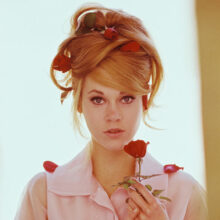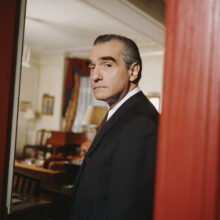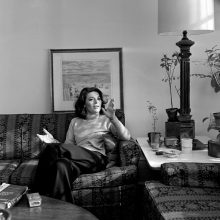
But Penn was just as known for his celebrity portraits: Marlene Dietrich, Truman Capote, Pablo Picasso. His nudes. His ethnographic studies. His cigarette still-lifes. And his flowers, a Tory favorite — blooms after blooms that transform into vibrant, almost surreal painterly forms when blown up and seen up-close, shot against a stark white background.
And while he photographed flowers throughout his career — and even published a book on the subject, Flowers — did you know that florals weren’t actually an original interest of his? He only began shooting them in 1967 as an assignment for Vogue.
“I’m terribly resistant to everything,” Penn told the New York Times in a 1991 interview. “If Liberman had said, ‘Wouldn’t it be wonderful to photograph flowers?’ I’d have said, ‘I don’t give a damn about flowers.’ He’d say, ‘Just get some flowers,’ then I’d say, ‘It’s a waste of time, but if you want to convince yourself I can’t do that, I’ll try it.’ It reflects my honest feeling that I’m not capable. I don’t know enough about flowers. How could I presume to know enough about flowers by just going out and photographing them? It’s a sense of inadequacy.” But he did the assignment. And he did a flower portfolio for the magazine every year after that for the next five years.
Clearly, something must have clicked. Because Penn would go on to shoot flora until his death in 2009, long after those floral commissions stopped. Then again, in that same interview Penn also noted, “I can get obsessed by anything if I look at it long enough. That’s the curse of being a photographer.”
More to explore in Culture
-
 Culture
11.22.23
What’s Your Sign? Sagittarius
Culture
11.22.23
What’s Your Sign? Sagittarius
-
 Culture
10.19.23
What’s Your Sign? Scorpio
Culture
10.19.23
What’s Your Sign? Scorpio
-
 Culture
9.19.23
What’s Your Sign? Libra
Culture
9.19.23
What’s Your Sign? Libra
-
 Culture
8.14.23
What’s Your Sign? Virgo
Culture
8.14.23
What’s Your Sign? Virgo
-
 Culture
7.14.23
What’s Your Sign? Leo
Culture
7.14.23
What’s Your Sign? Leo
